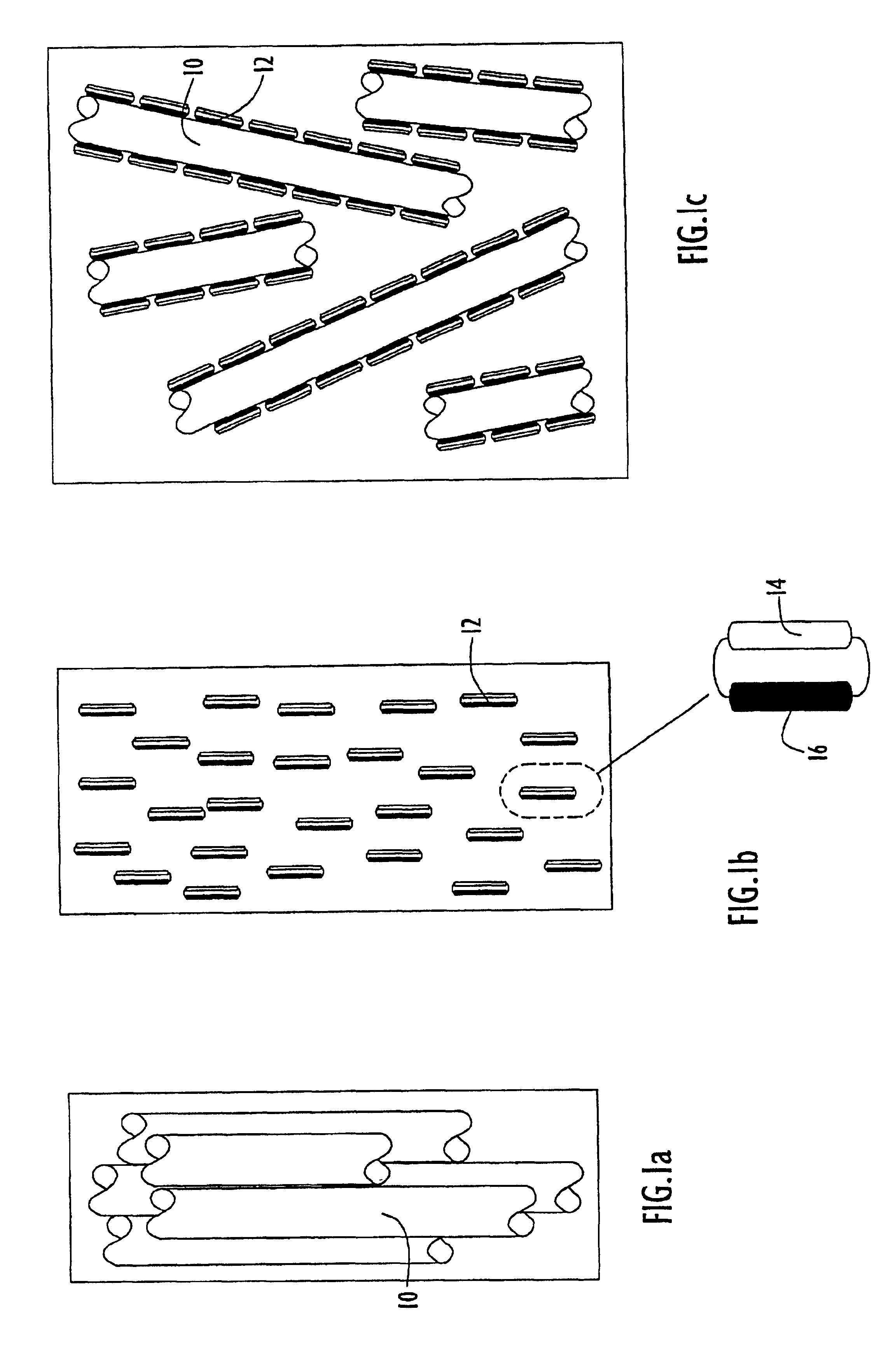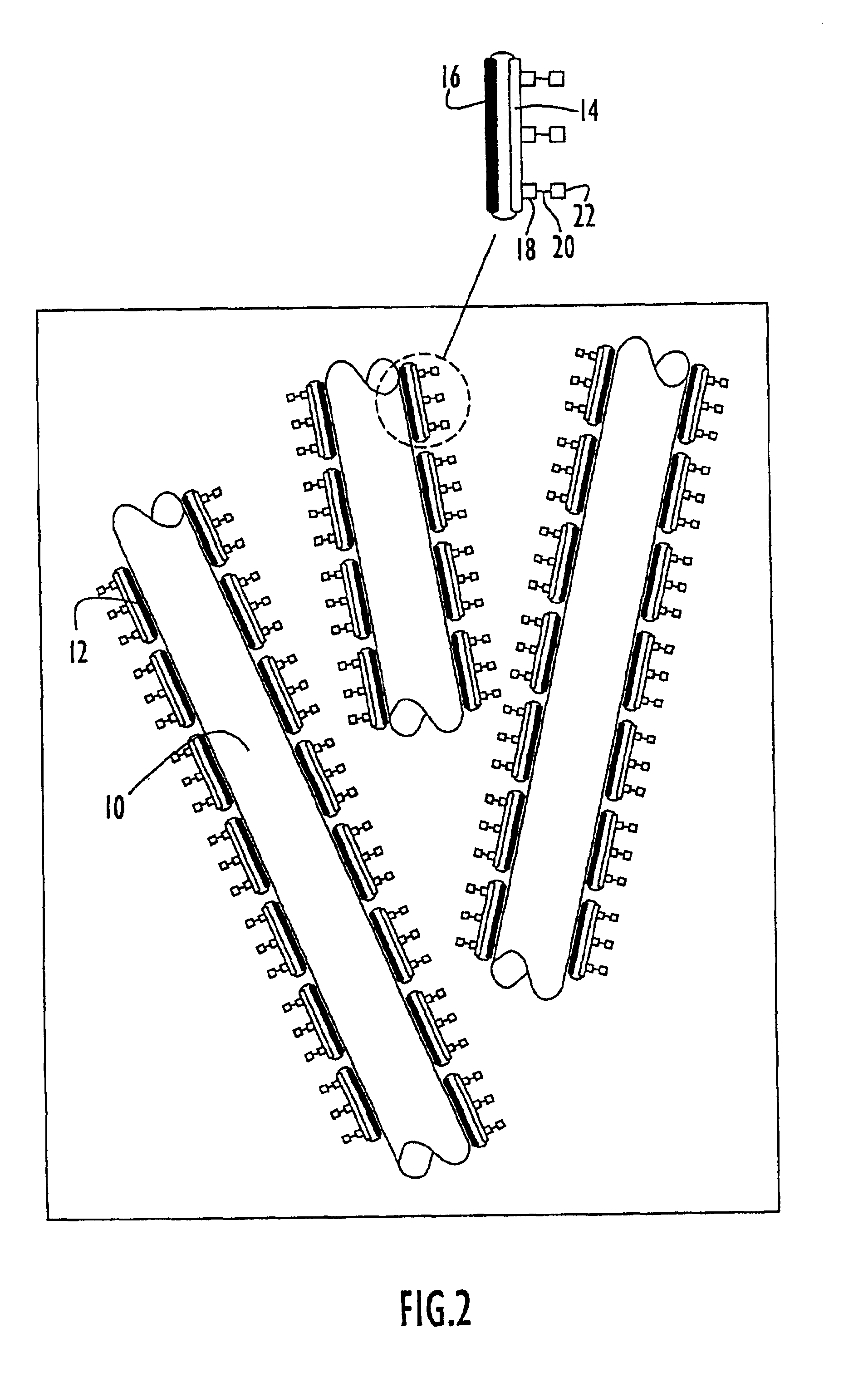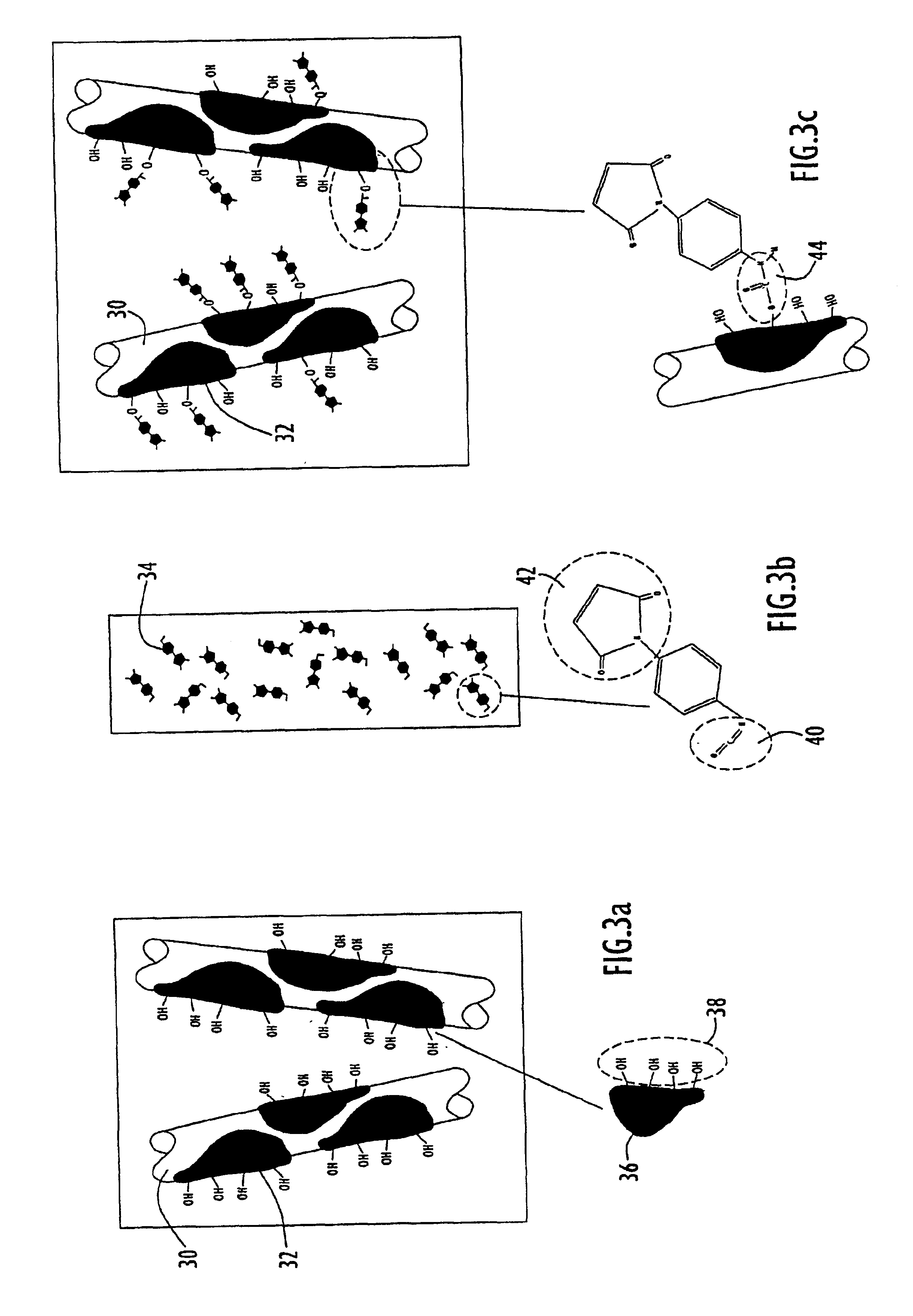Spatial localization of dispersed single walled carbon nanotubes into useful structures
a single walled carbon nanotube, spatial localization technology, applied in the direction of yarn, transportation and packaging, artificial filament chemical after-treatment, etc., can solve the problems of little or no structural strength, the nanotube bundles formed by these manufacturing methods are extremely difficult to separate, and the researchers of carbon nanotubes, etc., to achieve the effect of improving structural properties
- Summary
- Abstract
- Description
- Claims
- Application Information
AI Technical Summary
Benefits of technology
Problems solved by technology
Method used
Image
Examples
Embodiment Construction
[0030]The ability of dispersal agents to effectively purify and isolate SWCNT structures within an aqueous solution is disclosed in U.S. patent application Ser. No. 09 / 932,986. A dispersal agent, as disclosed in that application, can be any suitable reagent that is effective in substantially solubilizing and dispersing SWCNT structures in an aqueous solution by increasing the interaction at the surface interface between each nanotube structure and water molecules in solution. The underlying mechanisms whereby a dispersal agent brings about dispersion of individual SWCNT structures, from the “bundles” or “ropes” in which they are constitutively formed, into an aqueous solution is primarily based upon the ability of the dispersal agent to break down the molecular forces at the surface of the SWCNT structure preventing water molecules from interacting with the SWCNT surface. In addition, due to the large surface area of the SWCNT structure, the dispersal agent preferably has a molecula...
PUM
| Property | Measurement | Unit |
|---|---|---|
| molecular weight | aaaaa | aaaaa |
| concentration | aaaaa | aaaaa |
| pH | aaaaa | aaaaa |
Abstract
Description
Claims
Application Information
 Login to View More
Login to View More - R&D
- Intellectual Property
- Life Sciences
- Materials
- Tech Scout
- Unparalleled Data Quality
- Higher Quality Content
- 60% Fewer Hallucinations
Browse by: Latest US Patents, China's latest patents, Technical Efficacy Thesaurus, Application Domain, Technology Topic, Popular Technical Reports.
© 2025 PatSnap. All rights reserved.Legal|Privacy policy|Modern Slavery Act Transparency Statement|Sitemap|About US| Contact US: help@patsnap.com



